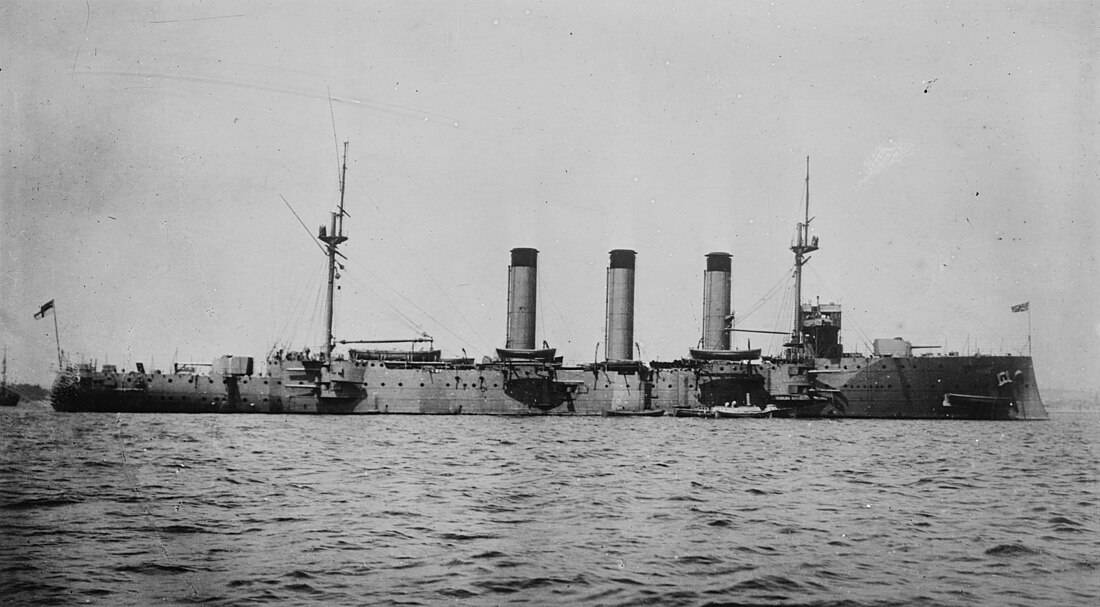Top Qs
Timeline
Chat
Perspective
Monmouth-class cruiser
British warship class (1903–1921) From Wikipedia, the free encyclopedia
Remove ads
The Monmouth class was a ten-ship class of 10,000-ton armoured cruisers built around 1901 to 1903 for the Royal Navy and designed specifically for commerce protection. The ships were also referred to as County class cruisers as they carried the names of British counties.
Remove ads
Design

Left elevation and deck plan as depicted in Jane's Fighting Ships 1914

Aft port casemate guns on Berwick, illustrating the unfortunate positioning
Expected only to fight light cruisers and armed merchant ships, the class was armed with fourteen 6-inch guns at a time when most British armoured cruisers also carried at least a pair of 9.2-inch guns: Four of the guns were mounted in two twin turrets at a good height, the remaining ten were installed in hull-mounted casemates, five on each side. The lower casemate guns were just a few feet above water, making them impossible to use in heavy seas. Sir John Fisher commented that "Sir William White designed the County class but forgot the guns."[1] On the other hand, they were relatively fast ships for their time.
Remove ads
Ships
Summarize
Perspective
The following table gives the build details and purchase cost of the members of the Monmouth class. Standard British practice at that time was for these costs to exclude armament and stores. The compilers of The Naval Annual revised costs quoted for British ships between the 1905 and 1906 editions. The reasons for the differences are unclear.[2]
Remove ads
Service
Summarize
Perspective


Upon completion, the ships served briefly in home waters before being assigned to various oversea stations (the China Station and the North America and West Indies Station). During this time HMS Bedford was wrecked in the East China Sea in 1910 and scrapped.
Following the outbreak of World War I, the ships were primarily tasked with combating German commerce raiders, patrolling in both the North and South Atlantic. HMS Monmouth was assigned to Rear Admiral Sir Christopher Cradock's squadron, and was sunk at the Battle of Coronel in November 1914. HMS Kent was also assigned to Cradock's squadron, but failed to join in time; she remained at the Falkland Islands and joined Vice-Admiral Doveton Sturdee's squadron, which also included HMS Cornwall. In the ensuing Battle of the Falklands in December 1914, HMS Kent pursued and sank the light cruiser Nürnberg, while HMS Cornwall pursued and sank the light cruiser Leipzig. HMS Kent continued the pursuit of the light cruiser Dresden, eventually locating her and forcing her to be scuttled at the Battle of Más a Tierra. In 1915, HMS Cornwall participated in the blockade of the light cruiser Königsberg in the Rufiji River.
After World War I, several of the ships served briefly as training ships. All soon were withdrawn from service and scrapped in 1920 and 1921.
Notes
References
Bibliography
External links
Wikiwand - on
Seamless Wikipedia browsing. On steroids.
Remove ads

